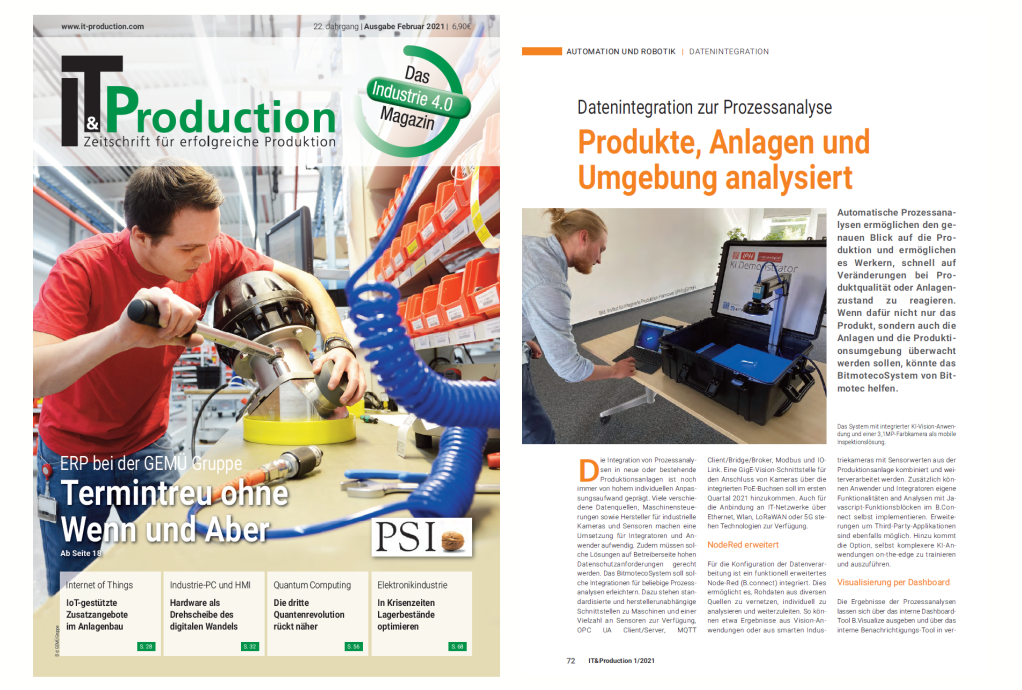Challenges of Automated Process Data Analysis
Why it is important to process process data from a wide variety of sources for individual process analyses and how Bitmotec’s BITMOTECOsystem makes this possible, you can find out in the current issue of IT&Production – The Industry 4.0 magazine for successful production.
Automated process analyses provide a close look at production and enable workers to react quickly to changes in product quality or plant condition. If not only the product, but also the systems and the production environment are to be monitored, then the BITMOTECO machine monitoring from Bitmotec can help.
The integration of process analyses into new or existing production facilities is still characterized by a high level of individual adaptation effort. Condition monitoring forms the basis for process analyses. Many different data sources, machine controls, and manufacturers of industrial cameras and sensors make implementation time-consuming for integrators and users. In addition, such solutions must meet high data protection requirements on the operator side. The BITMOTECOsystem is designed to facilitate such integrations for any process analysis such as the OEE key figure . For this purpose, standardized and manufacturer-independent interfaces to machines and a variety of sensors are available, OPC UA Client/Server, MQTT Client/Bridge/Broker, Modbus and IO-Link. A GigE Vision interface for connecting cameras via the integrated PoE sockets is expected to be added in the first quarter of 2021. Technologies are also available for connecting to IT networks via Ethernet, WLAN, LoRaWAN or 5G.
Fast implementation through managed open source modules
For the configuration of data processing, the open source module Node-RED, managed by Bitmotec, is integrated into the BITMOTECO OS (the operating system). This makes it possible to network, analyze and forward raw data from various sources. For example, results from vision applications or smart industrial cameras can be combined with sensor values from the production plant and further processed. In addition, users and integrators can implement their own functionalities and analyses with Javascript function blocks in the Node-RED themselves. In addition, extensions with third-party applications are also possible. In addition, there is the option to train and run even more complex AI applications on-the-edge.
The results of the process analyses can be output via the internal dashboard tool Grafana and sent via the internal notification tool to various channels or higher-level systems (ERP or MES software). The modular dashboard tool Grafana offers user management for different user groups (e.g. production managers and machine operators). The user control controls the person- and role-related display of the dashboards via the company’s own network to the connected computers. A notification system, e.g. on the basis of threshold value exceedances, the system also provides.
In addition to Node-RED , other managed open source modules such as Grafana, Influxdb, Mosquitto, PostgreSQL and Chripstack are also available.
Sources
The original article was published at:
PDF: IT&Production February Issue

